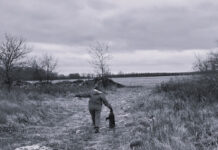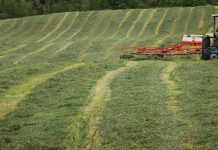Part II of a series
“The old country doctor was a man of few words because there were no words.” >– Dr. Arthur E. Hertzler,
The Horse and Buggy Doctor, copyright 1938
It has been said that the best doctors of the olden days had started out as farm children. One quote from Dr. Arthur Hertzler’s life story, penned in his retirement years, backs up this statement.
He writes of one long, tough trip to arrive at a patient’s deathbed: “Besides the mules and the hotel and my friend the train conductor holding the train for me, the account of one particular trip would not be complete without a mention of the chief actor, the patient.
“It was a case of intestinal obstruction due to adhesions of intestines to and impending necrosis of the gallbladder. I operated on this patient as she lay on the edge of the bed — sleeves rolled up, no operating gown, not even a face mask, operating under local anesthesia.
“The patient recovered. She recovered because I knew the principles of drainage. Principles learned, some will be horrified to learn, by operating on dogs.”
Getting around
The arduous journey to get to the patient, time and time again, is a significant part of the story. Starting on horseback, if a doctor could catch a train to cover a large area of ground to reach the ill, it was a considerable help. He then would rely on the goodness of others to provide a horse or mule upon reaching yet another far-flung train station destination.
“The old coal-burning stove in the front of the rail car was a most welcome haven.”
He says that while some consider the railroads to be “soulless corporations” doctors repeatedly saw the opposite. Another part of the story worth knowing is how little money ever actually changed hands from patient to doctor.
“To make this record complete it is necessary to record that the memory of the experience is all that I did get out of it, but this remark is unprofessional. The patient recovered — that should be sufficient, but I cannot help but recall that the trip cost me thirteen dollars.”
The knowledge imparted is interesting in many ways. After noting that he is glad those days are gone forever, he adds, “yet after all it is quite possible that if the young doctor of today had to make great sacrifices to reach his patient, and then sit for hours watching the course of the disease, he might take a more understanding view of the sick human … Few doctors of the bygone day died of heart disease as is the case now … the respectable way for the old-time doctor was to acquire pneumonia after an exposure and die on the fourth day while, in his delirium, he urged his team onward.
Giddyap, Jack!
He tells of a neighboring community doctor, a young man and his bride, who were about to leave on a wedding trip when they were delayed by a “sick call.”
After caring for an ailing girl, then offering instructions to her parents, the young doctor began his long trip home on horseback. He became ill and delusional. It was the horse given credit that he managed to return home to die.
The doctors of days gone by were exposed again and again to contagious disease, with no means of protecting themselves. Utter helplessness in the face of certain death must be hidden as “the doctor sticks to his task, and it was this silent faithfulness of the old doctor in the hour of grief that endeared him to the families that he served.”
(Next week: The advent of hospitals and a concept to be known as “insurance.”)












